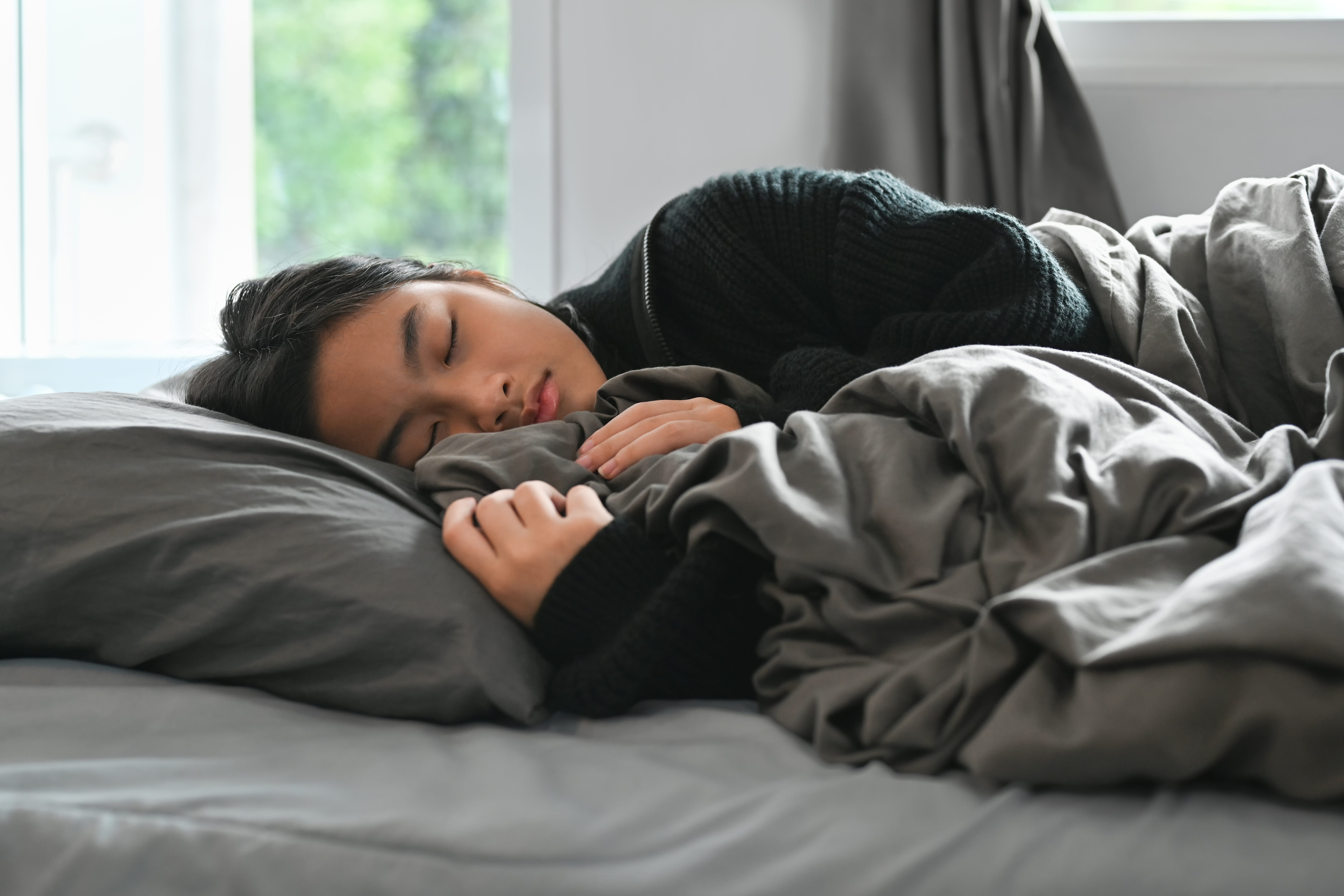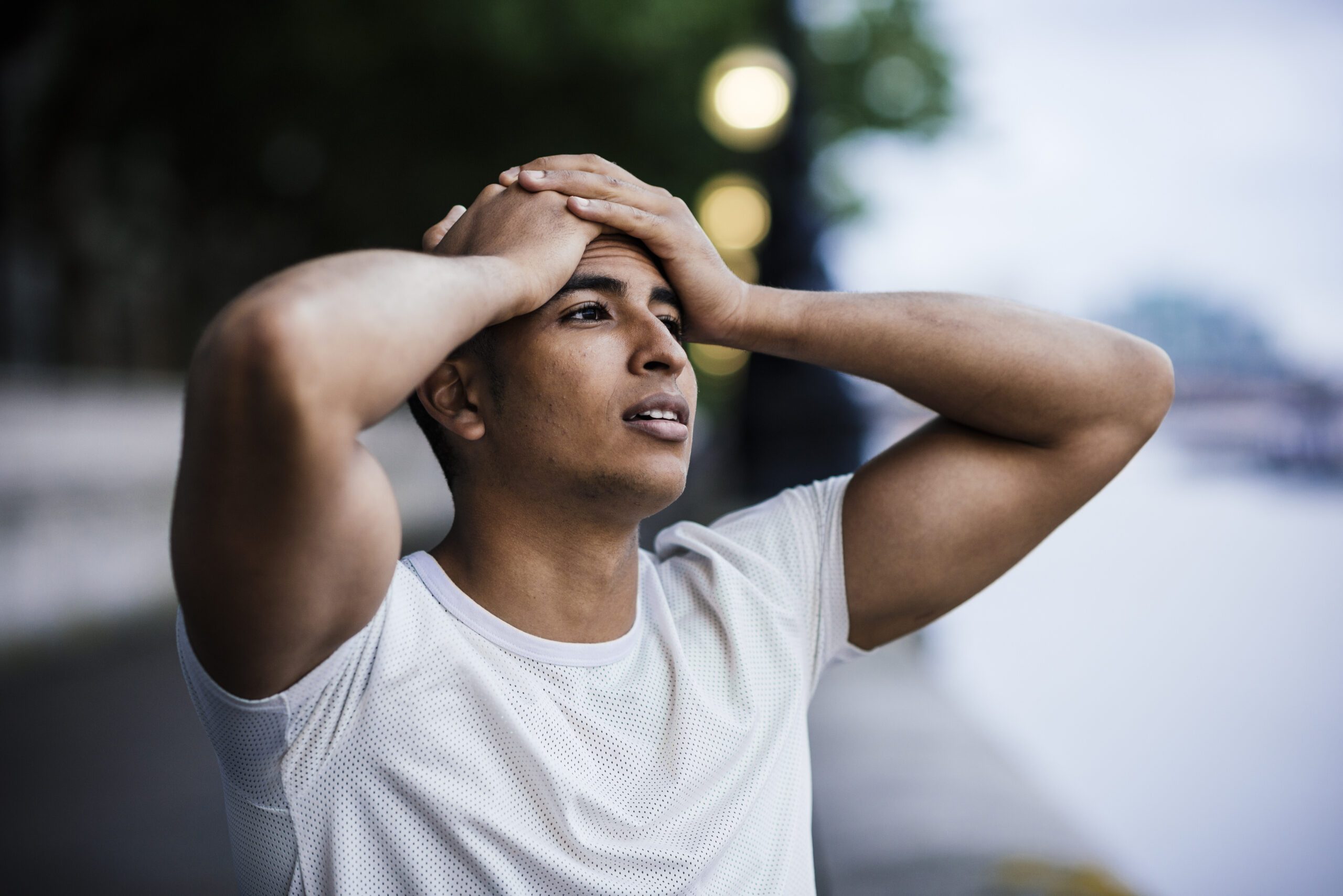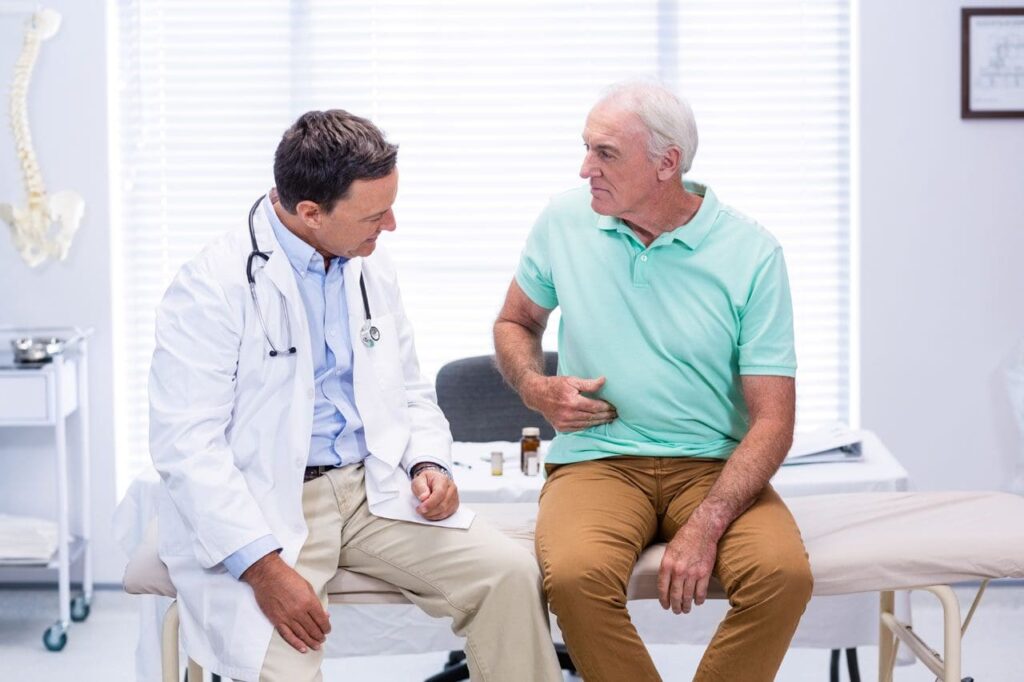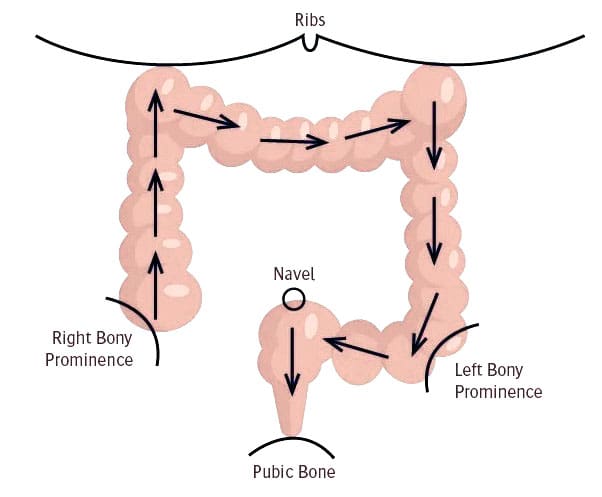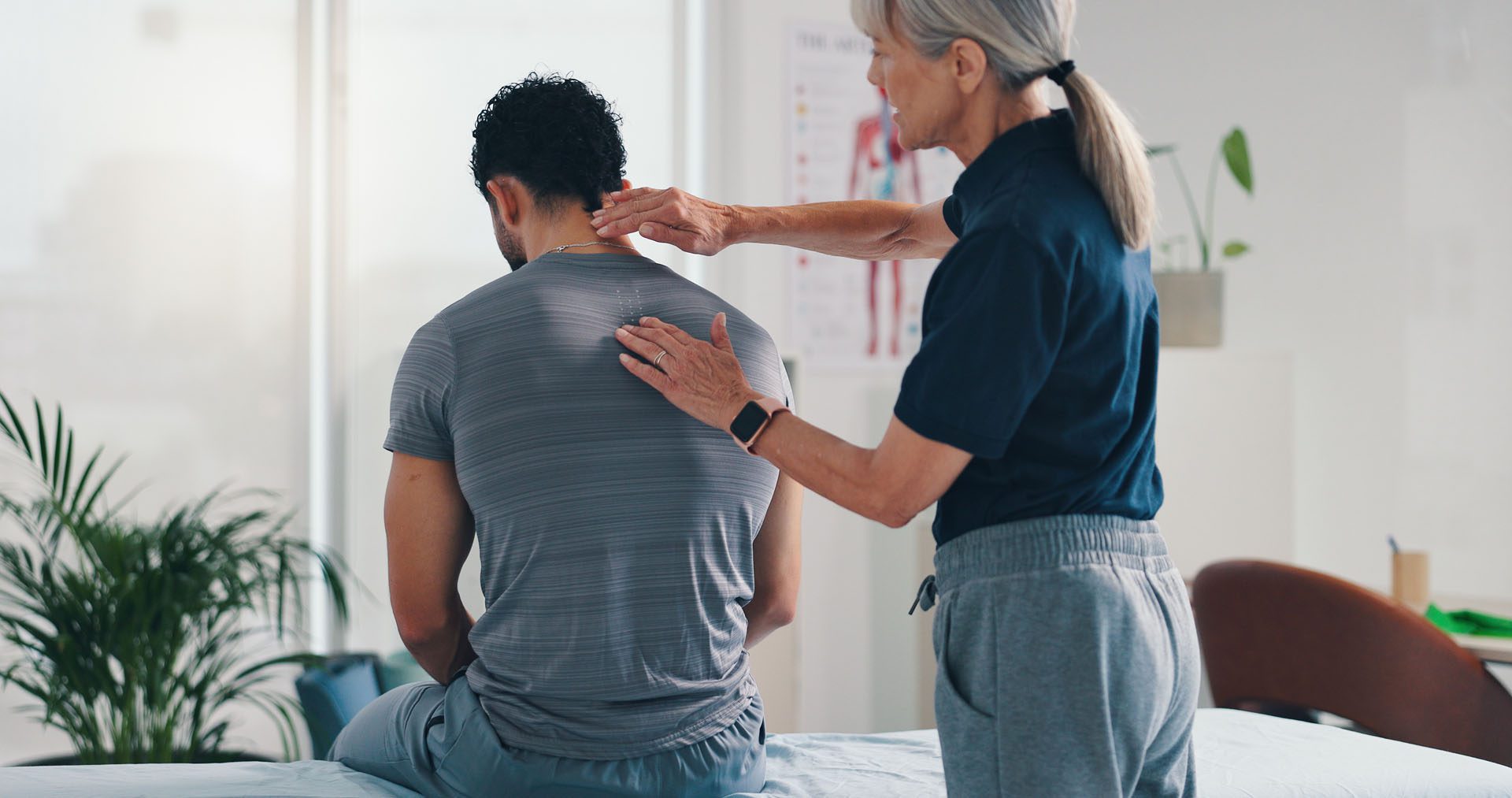A Clinical Approach for Treatment for Patients with Substance Use Disorder
Delve into the clinical approach for a comprehensive understanding of effective management and care for substance use disorder for patients.
Integrative Management of Substance Use Disorder (SUD) and Musculoskeletal Health: A Collaborative Model for Chiropractors and Nurse Practitioners
The musculoskeletal system, behavior, brain, and overall body are all impacted by substance use disorder (SUD), a chronic illness that may be treated. For many individuals, SUD coexists with functional restrictions, mental discomfort, chronic pain, and injury. According to the American Medical Association [AMA], n.d., the National Institute on Drug Abuse [NIDA], n.d., and the National Institute of Mental Health [NIMH], 2025, an integrative care model can lower risk, enhance function, and promote long-term recovery by combining evidence-based SUD screening and treatment with chiropractic care and nurse practitioner (NP)-led primary care.
This article describes SUD, how it may be recognized and classified, how physicians can treat it with useful processes, and how integrated chiropractic and NP treatment can address physical repercussions and overlapping risk profiles.
What Is Substance Use Disorder (SUD)?
SUD is a medical condition in which the use of alcohol, medications, or other substances leads to significant impairment or distress in daily life. It is not a moral failing or a lack of willpower; it is a chronic, brain‑ and body‑based disease that is treatable (NIDA, n.d.; NIMH, 2025).
SUD exists on a spectrum from mild to severe. People with SUD may:
- Use more of the substance than they planned
- Try and fail to cut down or stop
- Spend a lot of time obtaining, using, or recovering from the substance
- Continue to use even though it harms health, work, relationships, or safety (American Psychiatric Association, 2022; NIMH, 2025)
Person‑first, non‑stigmatizing language
Stigma can keep people from seeking care. Using respectful, person‑first language reduces shame and supports engagement. NIDA and the AMA recommend (NIDA, n.d.; AMA, n.d.):
- Say “person with a substance use disorder,” not “addict” or “drug abuser.”
- Say “substance use” or “misuse,” not “abuse.”
- Focus on SUD as a chronic, treatable condition.
Categories and Diagnostic Features of SUD
DSM‑5‑TR framework: Mild, moderate, severe
Diagnostic criteria for SUD come from the Diagnostic and Statistical Manual of Mental Disorders, Fifth Edition, Text Revision (DSM‑5‑TR) (American Psychiatric Association, 2022; NIAAA, 2025). A diagnosis is based on the number of symptoms present over 12 months.
Typical criteria include (paraphrased):
- Using more or for longer than intended
- Unsuccessful efforts to cut down
- Spending a lot of time obtaining, using, or recovering
- Cravings or strong urges
- Role failures at work, school, or home
- Social or interpersonal problems caused or worsened by use
- Giving up important activities
- Using in physically hazardous situations
- Continued use despite physical or psychological problems
- Tolerance
- Withdrawal
Severity is determined by symptom count (American Psychiatric Association, 2022; NIAAA, 2025):
- Mild: 2–3 symptoms
- Moderate: 4–5 symptoms
- Severe: 6 or more symptoms
Substance‑specific categories
Clinically, SUD is further categorized by substance type (NIDA, n.d.; NIMH, 2025):
- Alcohol use disorder (AUD)
- Opioid use disorder (e.g., heroin, oxycodone, hydrocodone)
- Stimulant use disorder (e.g., cocaine, methamphetamine)
- Sedative, hypnotic, or anxiolytic use disorder (e.g., benzodiazepines)
- Cannabis, tobacco, hallucinogen, or inhalant use disorders
Each category has similar behavioral criteria but unique medical risks, withdrawal profiles, and treatment options (NIDA, n.d.; NIAAA, 2025).
Risk and severity categories for clinical workflows
For practical care, validated screening tools classify risk that guide next steps (AMA, n.d.; NIDA, n.d.; NIAAA, 2025):
- Low/no risk: Negative screen or very low scores
- Moderate risk: At‑risk use with potential consequences (e.g., falls, crashes, future disease)
- Substantial/severe risk: High scores suggest likely SUD and active harm
For example, adult risk zones using tools like AUDIT and DAST (AMA, n.d.):
- Low risk/abstain: AUDIT 0–7; DAST 0–2
- Moderate risk: AUDIT 8–15; DAST 3–5
- Substantial/severe risk: AUDIT ≥16; DAST ≥6
These categories help teams decide when to give brief interventions, when to intensify care, and when to refer to specialty treatment.
Epidemiology and Public Health Impact
National surveys show that millions of people in the United States live with SUD, yet only a fraction receive treatment (Substance Abuse and Mental Health Services Administration [SAMHSA], 2023). The 2022 National Survey on Drug Use and Health reported high rates of both substance use and serious mental illness, often co‑occurring (SAMHSA, 2023).
Key points from recent federal data (SAMHSA, 2023; NIMH, 2025):
- SUD commonly co‑occurs with depression, anxiety, and other mental disorders.
- Co‑occurring conditions worsen medical outcomes and increase healthcare use.
- Early identification and integrated treatment can improve function, reduce complications, and lower long‑term costs.
Identifying Patients With SUD: Screening and Assessment
Early, routine identification is critical. Primary care teams, NPs, and chiropractic clinics that integrate behavioral health can all play a role (AMA, n.d.; NIDA, n.d.; NIAAA, 2025).
Building a safe, trauma‑informed environment
Before asking about substance use, the team should (AMA, n.d.; NIDA, n.d.):
- Explain that “we screen everyone” as part of whole‑person care.
- Emphasize confidentiality within legal limits.
- Use a calm, nonjudgmental tone and body language.
- Offer patients the option not to answer any question.
- Acknowledge that stress, trauma, pain, and life pressures often contribute to substance use.
This aligns with trauma‑informed care principles promoted by SAMHSA and helps patients feel safe enough to share (AMA, n.d.).
Validated screening tools
Evidence‑based tools are preferred over informal questioning. Common options include (AMA, n.d.; NIDA, n.d.; NIAAA, 2025):
For adults:
- AUDIT or AUDIT‑C (Alcohol Use Disorders Identification Test) – screens for unhealthy alcohol use and risk of AUD.
- DAST‑10 (Drug Abuse Screening Test) – screens for non‑alcohol drug use problems.
- TAPS Tool (Tobacco, Alcohol, Prescription medication, and other Substances) – combined screen and brief assessment.
For adolescents:
- CRAFFT 2.1+N – widely used for youth; captures risk behaviors and problems.
- S2BI (Screening to Brief Intervention) and BSTAD – brief tools validated for ages 12–17 (NIDA, n.d.; AMA, n.d.).
For alcohol‑specific quick screens:
- AUDIT‑C (3 questions) or full AUDIT
- NIAAA Single Alcohol Screening Question (SASQ):
“How many times in the past year have you had 4 (for women) or 5 (for men) or more drinks in a day?” (NIAAA, 2025)
Results guide risk categorization and next steps.
Role of the care team
In integrated practices, roles can be divided (AMA, n.d.):
- Medical assistants or nurses
- Administer pre‑screens and full questionnaires.
- Flag positive or concerning responses.
- Nurse practitioners / primary care clinicians
- Review screening results.
- Deliver brief interventions using motivational interviewing.
- Conduct or oversee further assessment.
- Prescribe and manage pharmacotherapy for SUD when indicated.
- Coordinate referrals and follow‑up.
- Behavioral health clinicians (on‑site or virtual)
- Perform biopsychosocial in-depth evaluations.
- Provide psychotherapy and relapse‑prevention skills.
- Support motivational enhancement and family engagement.
- Chiropractors and physical‑medicine providers
- Screen for substance misuse related to pain, function, and injury patterns.
- Observe red flags (frequent lost prescriptions, inconsistent pain reports, sedation, falls).
- Communicate concerns to the NP or primary medical provider.
Dr. Alexander Jimenez, DC, APRN, FNP‑BC, exemplifies this dual role. As both a chiropractor and a family practice NP, he combines neuromusculoskeletal assessment with medical screening and functional medicine evaluation to identify root causes of chronic pain and unhealthy substance use patterns (Jimenez, n.d.).
Clinical clues that may suggest SUD
Beyond formal tools, clinicians should stay alert for patterns such as (AMA, n.d.; NIMH, 2025):
- Frequent injuries, falls, or motor vehicle accidents
- Repeated missed appointments or poor adherence to treatment
- Drowsiness, agitation, slurred speech, or odor of alcohol
- Unexplained weight loss, infections, or liver abnormalities
- Social and financial instability, job loss, or legal problems
In chiropractic and musculoskeletal settings, repeated injuries, delayed healing, inconsistent exam findings, or “pain behaviors” that do not match imaging or biomechanics may prompt gentle, supportive screening and medical referral.
Comprehensive Assessment and Risk Stratification
Once a screen is positive, the next level is a more detailed assessment. This should examine substance type, frequency, amount, impact, withdrawal, mental health, physical comorbidities, and function (AMA, n.d.; NIMH, 2025).
Structured assessment tools
Clinicians may use (AMA, n.d.; NIDA, n.d.; NIAAA, 2025):
- Full AUDIT for alcohol
- DAST‑10 for general drugs
- CRAFFT or GAIN for adolescents
- Checklists based directly on DSM‑5‑TR criteria to rate symptom count and severity (NIAAA, 2025).
These tools allow classification into mild, moderate, or severe SUD and support shared decision‑making regarding level of care.
Co‑occurring mental health conditions
SUD frequently co‑occurs with (NIMH, 2025):
- Major depressive disorder
- Anxiety disorders
- Posttraumatic stress disorder (PTSD)
- Bipolar disorder
- Attention‑deficit/hyperactivity disorder
Co‑occurring disorders can:
- Increased risk for self‑medication with substances
- Worsen treatment outcomes if not recognized
- Require integrated treatment plans (NIMH, 2025)
NPs, behavioral health clinicians, and chiropractors with integrative training should maintain a low threshold for mental health screening and referral.
Managing Patients With SUD: A Practical Clinical Process
Effective SUD care is chronic‑disease care: ongoing, team‑based, and tailored to readiness to change (AMA, n.d.; SAMHSA, 2023).
Core elements of management
Key components include (AMA, n.d.; NIDA, n.d.; NIMH, 2025):
- Routine screening and re‑screening
- Brief interventions and motivational interviewing
- Harm‑reduction strategies
- Medications for certain SUDs (when appropriate)
- Evidence‑based behavioral therapies
- Peer and family support
- Long‑term follow‑up and relapse‑prevention planning
Brief intervention and motivational interviewing
For patients with low to moderate risk, brief intervention can be delivered in 5–15 minutes and often by NPs or primary care clinicians (AMA, n.d.; NIAAA, 2025). Using motivational interviewing, clinicians:
- Ask open‑ended questions (“What do you enjoy about drinking? What concerns you about it?”)
- Reflect and summarize the patient’s own statements
- Ask permission before giving advice
- Help patients set realistic, patient‑chosen goals (cutting down, abstaining, or seeking treatment)
This approach respects autonomy and builds internal motivation for change.
Determining level of care
The American Society of Addiction Medicine (ASAM) describes a continuum of care (AMA, n.d.; SAMHSA, 2023):
- Prevention/early intervention
- Brief interventions in primary care
- Self‑management support and education
- Outpatient services
- Office‑based counseling and medications for AUD or opioid use disorder (OUD)
- Integrated behavioral health visits
- Intensive outpatient / partial hospitalization
- Several therapy sessions per week, day or evening programs
- Residential/inpatient services
- 24‑hour structured care for severe or complex cases
- Medically managed intensive inpatient services
- Medically supervised detoxification and stabilization
NPs and primary care teams decide the appropriate level based on risk severity, co‑occurring medical and psychiatric conditions, social supports, and patient preference (AMA, n.d.; NIMH, 2025).
Medications for SUD
For some patients, medications support recovery by reducing cravings, blocking rewarding effects, or stabilizing brain function (SAMHSA, 2020; AMA, n.d.; NIAAA, 2025). Examples include:
- Alcohol use disorder
- Acamprosate – supports abstinence after detox
- Disulfiram – creates an unpleasant reaction to alcohol, discouraging use
- Naltrexone blocks the rewarding effects of alcohol
- Opioid use disorder
- Buprenorphine – a partial opioid agonist that reduces cravings and overdose risk; often prescribed in primary care with appropriate DEA registration
- Methadone – full agonist, dispensed in specialized opioid treatment programs
- Naltrexone (extended‑release) – opioid antagonist that prevents relapse after detox
- Overdose prevention
- Naloxone – rapid opioid‑overdose reversal, recommended for anyone at risk (AMA, n.d.).
NPs managing patients with SUD work within state scope‑of‑practice rules and in collaboration with addiction specialists where needed.
Behavioral therapies and peer support
Evidence‑based therapies include (AMA, n.d.; NIDA, n.d.):
- Cognitive behavioral therapy (CBT)
- Dialectical behavior therapy (DBT)
- Motivational enhancement therapy
- The Matrix Model (especially for stimulants)
- Family‑based therapy for adolescents
Peer support groups (Alcoholics Anonymous, Narcotics Anonymous, SMART Recovery) can reinforce coping skills, hope, and accountability.
Long‑term follow‑up
SUD is chronic; relapse risk can persist for years. Best practice includes (AMA, n.d.; NIMH, 2025):
- Follow‑up within 2 weeks after treatment initiation
- Monthly to quarterly visits as patients stabilize
- Peer support and care management between visits
- Rapid re‑engagement after any relapse or lapse
NASW, NIDA, and NIMH stress that relapse should be treated as a signal to adjust care—not as failure (NIDA, n.d.; NIMH, 2025).
How SUD Affects the Body and the Musculoskeletal System
SUD impacts nearly every organ system. Many effects directly or indirectly worsen neuromusculoskeletal health and pain.
General systemic effects
Common systemic consequences include (NIDA, n.d.; NIMH, 2025; SAMHSA, 2023):
- Cardiovascular disease and hypertension
- Liver disease and pancreatitis (especially with alcohol)
- Respiratory disease (especially with tobacco and some drugs)
- Endocrine and hormonal disruption
- Immune dysfunction and higher infection risk
- Sleep disturbances and fatigue
- Worsening of mood, anxiety, and cognitive function
These changes affect healing capacity, resilience, and the way patients perceive pain.
Musculoskeletal and pain‑related effects
Substance use and SUD can influence the musculoskeletal system through several pathways:
- Increased injury risk
- Impaired judgment, coordination, and reaction time increase the risk of falls, motor vehicle accidents, and sports injuries.
- Heavy alcohol use is associated with fractures, soft tissue injuries, and delayed healing (AMA, n.d.; SAMHSA, 2023).
- Bone, joint, and muscle changes
- Alcohol and some drugs can impair bone density and quality, increasing osteoporosis and fracture risk.
- Nutritional deficiencies associated with SUDs weaken connective tissue and muscle function.
- Sedentary behavior and deconditioning are common in people with long‑standing SUD.
- Chronic pain and central sensitization
- Chronic alcohol or opioid use can alter pain pathways in the central nervous system, raising pain sensitivity.
- Opioid‑induced hyperalgesia can make pain seem worse even at stable or increasing doses.
- Functional and ergonomic stress
- Disrupted sleep, poor posture, and prolonged sitting or immobility (for example, in recovery environments or during unemployment) can lead to spinal stress, neck and low back pain, and muscle imbalance.
Clinically, Dr. Jimenez and similar integrative providers often see patients with combined profiles: chronic low back or neck pain, sedentary work, ergonomic strain, poor sleep, high stress, and escalating reliance on medications, including opioids or sedatives. Addressing both the mechanical and behavioral contributors can change the trajectory of pain and SUD risk (Jimenez, n.d.).
Integrative Chiropractic Care in the Context of SUD
Philosophy of integrative chiropractic care
Integrative chiropractic care focuses on restoring alignment, mobility, and neuromuscular control while considering lifestyle, nutrition, sleep, and emotional stress. In the model used by Dr. Jimenez, chiropractic adjustments are combined with functional medicine strategies, targeted exercise, and collaborative medical care (Jimenez, n.d.).
For patients with or at risk of SUD, this approach offers:
- Non‑pharmacologic pain management
- Improved movement, posture, and ergonomics
- Education that empowers patients to self‑manage pain
- Reduced reliance on habit‑forming medications
Spinal adjustments and targeted exercises
Spinal and extremity adjustments aim to:
- Restore joint mobility
- Reduce mechanical irritation of nerves and soft tissues
- Improve segmental alignment and overall posture
Targeted exercises are prescribed to:
- Strengthen deep stabilizing muscles (core, gluteal, cervical stabilizers)
- Correct muscle imbalances and faulty patterns
- Increase flexibility and joint range of motion
- Enhance proprioception, balance, and movement control
Examples of targeted exercise strategies often used in integrative chiropractic and rehab clinics include (Jimenez, n.d.):
- Lumbar stabilization and core‑strengthening sequences
- Hip mobility and glute activation drills for low back and sciatica‑like pain
- Cervical and scapular stabilization for neck and shoulder pain
- Postural retraining, including ergonomic break routines for prolonged sitting
By reducing biomechanical stress and enhancing functional capacity, these interventions may decrease pain intensity, frequency, and flare‑ups, which in turn can lower the drive to self‑medicate with substances.
Reducing overlapping risk profiles
Many risk factors for SUD and for chronic musculoskeletal pain overlap, including (NIMH, 2025; NIDA, n.d.; Jimenez, n.d.):
- Chronic stress and trauma
- Poor sleep and circadian disruption
- Sedentary lifestyle and obesity
- Repetitive strain and poor ergonomics
- Social isolation and low self‑efficacy
Integrative chiropractic care can help shift these shared risk profiles by:
- Encouraging regular physical activity and graded movement
- Coaching ergonomic and postural strategies at work and home
- Teaching breathing, stretching, and relaxation routines that reduce muscle tension and sympathetic overdrive
- Collaborating with NPs and behavioral health clinicians to align interventions with mental health and SUD treatment plans
In Dr. Jimenez’s practice, this often includes structured flexibility, mobility, and agility programs that are adapted to age and functional status, with close monitoring to avoid over‑reliance on medications, including opioids and sedatives (Jimenez, n.d.).
The Nurse Practitioner’s Role in Comprehensive SUD and Musculoskeletal Care
NPs are well-positioned to coordinate SUD care and integrate it with musculoskeletal and chiropractic treatment.
Comprehensive medical management
NP responsibilities typically include (AMA, n.d.; NIMH, 2025; NIAAA, 2025):
- Conducting and interpreting SUD screening and risk stratification
- Performing physical exams and ordering labs or imaging
- Diagnosing SUD and co‑occurring conditions
- Prescribing non‑addictive pain strategies and medications where indicated
- Managing or co‑managing medications for AUD or OUD (per training and regulations)
- Monitoring for drug–drug and drug–disease interactions
- Coordinating with behavioral health and community resources
In integrative settings like Dr. Jimenez’s clinic, the NP role is blended with functional medicine principles, looking at nutrition, metabolic health, hormonal balance, and inflammation that influence both pain and SUD risk (Jimenez, n.d.).
Ergonomic and lifestyle counseling
NPs also provide individualized counseling on:
- Workplace ergonomics (desk height, chair support, screen position)
- Safe lifting strategies and body mechanics
- Activity pacing and graded return to work or sport
- Sleep hygiene and circadian rhythm support
- Nutrition strategies that support musculoskeletal healing and brain health
These interventions lower the mechanical load on the spine and joints, reduce fatigue, and increase a patient’s sense of control—all of which help reduce triggers for substance use and relapse.
Care coordination and team communication
NPs often serve as the central coordinator who (AMA, n.d.; NIMH, 2025):
- Ensures all team members (chiropractor, physical therapist, behavioral health, addiction medicine, primary care, or specialty providers) share a coherent plan
- Tracks progress on pain, function, substance use, mood, and quality of life
- Adjusts the plan as conditions change
- Supports families and caregivers in understanding both SUD and musculoskeletal needs
In a model like Dr. Jimenez’s, this may involve regular case conferences, shared EHR notes, and integrated treatment plans that align spinal rehabilitation with SUD recovery goals (Jimenez, n.d.).
Understanding Long Lasting Injuries- Video
Practical Clinical Pathway: From First Contact to Long‑Term Recovery
For clinics that combine chiropractic and NP services, a practical, stepwise pathway for patients with possible SUD and musculoskeletal complaints can look like this (AMA, n.d.; NIDA, n.d.; NIAAA, 2025; NIMH, 2025; Jimenez, n.d.):
Step 1: Initial visit and global screening
- Intake includes questions on pain, function, injuries, sleep, mood, and substance use.
- Staff administer brief tools (for example, AUDIT‑C and DAST‑10 for adults, CRAFFT for adolescents).
- The chiropractor documents neuromusculoskeletal findings; the NP reviews medical and behavioral health risks.
Step 2: Identification of SUD risk
- Negative or low‑risk screens → brief positive health message and reinforcement of low‑risk behavior.
- Moderate risk → NP provides brief intervention, motivational interviewing, and a follow‑up plan.
- Substantial or severe risk → NP initiates comprehensive assessment, safety planning, and possible referral to specialized services.
Step 3: Integrated treatment planning
The team crafts a unified plan that may include:
- Spinal adjustments and targeted exercises to correct alignment and biomechanics
- Gradual increase in physical activity with pain‑sensitive pacing
- Non‑pharmacologic pain strategies (manual therapy, exercise therapy, education)
- Behavioral health referral for CBT, trauma‑informed treatment, or other modalities
- Consideration of medications for AUD or OUD, if indicated
- Harm‑reduction measures (for example, naloxone prescription for those at overdose risk)
Step 4: Ergonomics and lifestyle
- NP and chiropractor jointly review workplace and home ergonomics, posture, and activity patterns.
- Patients learn micro‑break routines, stretching, and strengthening sequences for high‑risk tasks (for example, lifting or prolonged sitting).
- Nutrition, stress‑management, and sleep interventions are introduced or refined.
Step 5: Monitoring and long‑term follow‑up
- Regular follow‑up visits evaluate:
- Pain levels and functional capacity
- Substance use patterns and cravings
- Mood, sleep, and quality of life
- Adherence to exercise and ergonomic plans
- The team updates the treatment plan to respond to progress, setbacks, or new diagnoses.
- Patients are coached to view flare-ups or lapses as opportunities to learn and adjust, not as failures.
This kind of coordinated, integrative approach can reduce repeated injuries, unnecessary imaging or surgeries, and long‑term dependence on medications, including opioids.
Clinical Insights from an Integrative Practice Model
Although each practice is unique, Dr. Alexander Jimenez’s clinic illustrates several principles that can guide others (Jimenez, n.d.):
- Whole‑person assessment: History taking includes injuries, lifestyle, trauma, nutrition, environment, and psychosocial stressors.
- Functional movement focus: Care plans emphasize flexibility, mobility, agility, and strength to restore capacity rather than just relieve symptoms.
- Non‑invasive first: Chiropractic adjustments, functional exercise, and lifestyle interventions are prioritized before invasive procedures or long‑term controlled substances.
- Integrated roles: As both DC and FNP‑BC, Dr. Jimenez unifies neuromusculoskeletal, primary care, and functional medicine perspectives in a single, coordinated plan.
- Patient empowerment: Education, coaching, and accessible care options help patients take a proactive role in maintaining spinal health and reducing SUD risk.
This model aligns with national guidance on behavioral health integration and SUD management in medical settings while adding the musculoskeletal and ergonomic expertise of chiropractic care (AMA, n.d.; NIDA, n.d.; NIMH, 2025).
Key Takeaways
- SUD is a chronic, treatable medical condition that often co‑occurs with mental disorders and chronic pain.
- Validated screening tools and non‑stigmatizing, trauma‑informed communication are core to early identification.
- Risk and severity categories (mild, moderate, severe) guide brief intervention, level of care, and referral decisions.
- SUD significantly affects the body, including bone health, soft tissue integrity, injury risk, and chronic pain pathways.
- Integrative chiropractic care—with spinal adjustments, targeted exercises, and ergonomic guidance—can reduce pain, improve function, and lower overlapping risk factors for SUD.
- Nurse practitioners provide comprehensive SUD management, coordinate care, and deliver ergonomic and lifestyle counseling that complements chiropractic treatment.
- A collaborative, long‑term, patient‑centered model—such as the one exemplified by Dr. Alexander Jimenez—offers a promising pathway to healthier spines, healthier brains, and healthier lives.
Conclusion
Compassion, evidence-based screening, and multidisciplinary care coordination are necessary for substance use disorder, a complicated medical illness. Understanding what SUD is, how to recognize it, and how to respond with respect and evidence-based interventions are the first steps towards enabling healthcare professionals—whether they are primary care physicians, chiropractors, nurse practitioners, or behavioral health specialists—to identify and support patients with SUD.
For patients dealing with both chronic pain and drug abuse, the combination of chiropractic therapy with nurse practitioner-led primary care provides a unique benefit. Patients may not disclose that they are also struggling with alcoholism, prescription opioid abuse, or amphetamine use when they arrive with a job injury, car accident, or years of bad ergonomics. However, these difficulties often coexist. The burden of poor healing, muscular atrophy, elevated pain sensitivity, and increased fracture risk falls on the musculoskeletal system. Both the intellect and the nerve system are impacted, and the cycle of pain and drug abuse is exacerbated by sleep disturbance, mood swings, and a diminished ability to handle stress.
This loop may be broken by clinics and practices that include screening, short intervention, and coordinated therapy. Mechanical function is restored via spinal modifications. Strength and proprioception are restored via targeted activities. Re-injury may be avoided with ergonomic coaching. Nurse practitioners help with medication coordination, drug interaction monitoring, and lifestyle counseling to promote healthy spines and SUD recovery. Counselors in behavioral health provide peer support, treatment, and relapse prevention. This team works together to address the underlying issues rather than simply the symptoms.
A single physician with dual expertise—chiropractic and family practice nurse practitioner credentials—can skillfully weave these threads into a cohesive, patient-centered strategy, as shown by the clinical paradigm typified by Dr. Alexander Jimenez. Continuity, goal alignment, and a clinician who is knowledgeable about the neurology of addiction as well as the biomechanics of a herniated disc are all advantageous to patients. With intentional team communication, collaborative decision-making, and a dedication to non-stigmatizing, trauma-informed treatment, larger practices may get comparable outcomes.
There is no doubt that early detection improves results and saves lives. Tools for validated screening are accurate and fast. Brief interventions and motivational interviews are effective. When used carefully, medications for alcohol and opioid use disorders are both safe and effective. Exercise, physical therapy, stress management, and social support are all effective but underused non-pharmacologic methods. Additionally, patients recover more quickly, resume their normal activities sooner, and are far less likely to relapse into drug abuse when musculoskeletal and behavioral health treatment are integrated.
Patients who regain their health, relationships, and sense of purpose are the ultimate reward for healthcare teams that are prepared to go beyond isolated complaints—beyond “just” back pain or “just” worry. This is what integrative, team-based, evidence-based treatment for musculoskeletal disorders and drug use disorders promises.
References
- American Medical Association. (n.d.). Substance use disorder treatment: How‑to guide for primary care integration [PDF]. American Medical Association.
- American Psychiatric Association. (2022). Diagnostic and statistical manual of mental disorders (5th ed., text rev.). American Psychiatric Publishing.
- Jimenez, A. D. (n.d.). Injury specialists: El Paso family practice nurse practitioner and chiropractor. Dr. Alex Jimenez. https://dralexjimenez.com/
- National Institute on Alcohol Abuse and Alcoholism. (2025). Screen and assess: Use quick, effective methods. National Institutes of Health. https://www.niaaa.nih.gov/health-professionals-communities/core-resource-on-alcohol/screen-and-assess-use-quick-effective-methods
- National Institute on Drug Abuse. (n.d.). Words matter: Preferred language for talking about addiction. National Institutes of Health. https://nida.nih.gov/research-topics/addiction-science/words-matter-preferred-language-talking-about-addiction
- National Institute on Drug Abuse. (n.d.). Screening tools and prevention. National Institutes of Health. https://nida.nih.gov/nidamed-medical-health-professionals/screening-tools-prevention
- National Institute of Mental Health. (2025). Finding help for co‑occurring substance use and mental disorders. National Institutes of Health. https://www.nimh.nih.gov/health/topics/substance-use-and-mental-health
- Substance Abuse and Mental Health Services Administration. (2023). 2022 national survey on drug use and health: Annual national report (HHS Publication No. PEP23‑07‑01‑006). U.S. Department of Health and Human Services. https://www.samhsa.gov/data/report/2022-nsduh-annual-national-report
- Substance Abuse and Mental Health Services Administration. (2020). Medications for opioid use disorder. U.S. Department of Health and Human Services. https://www.samhsa.gov/medication-assisted-treatment/medications-counseling-related-conditions




